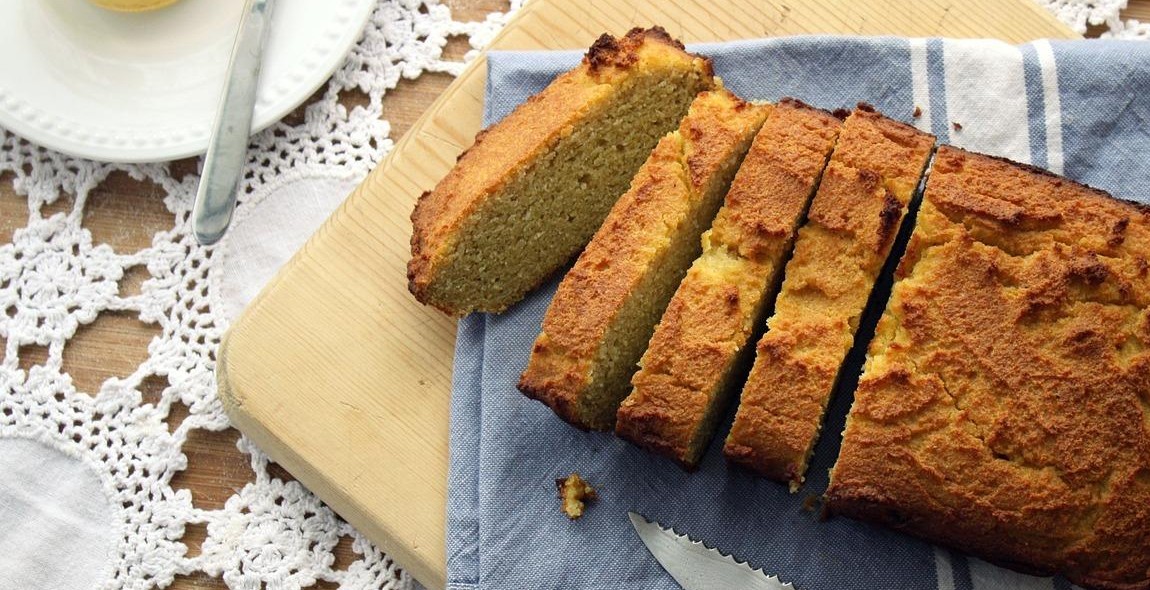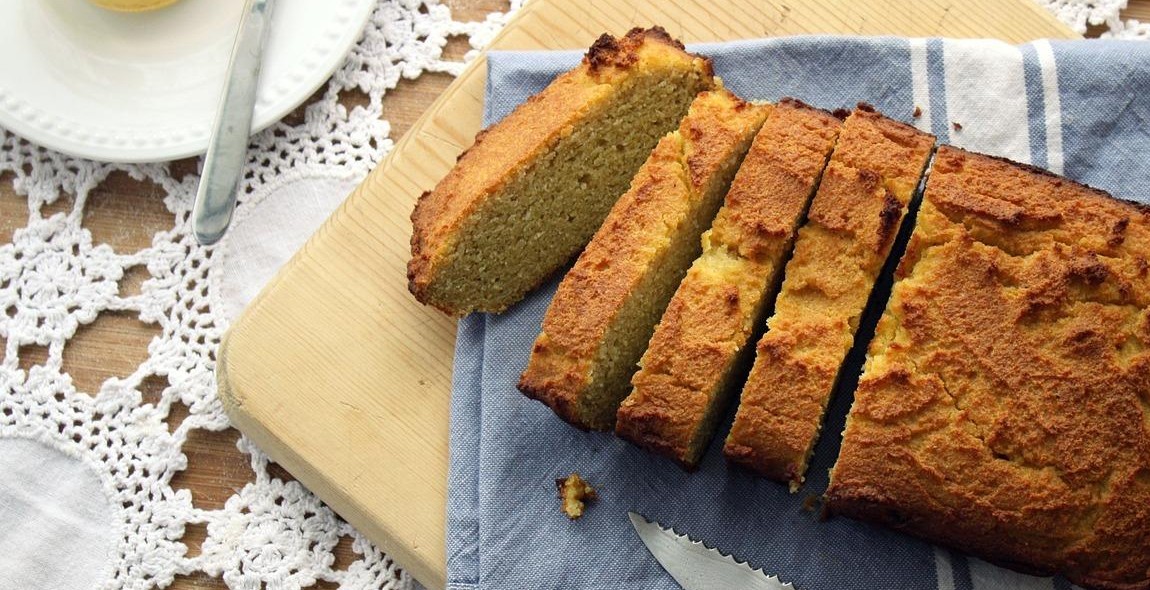How to Make Gluten-Free Baked Goods: Recipes and Tips for Delicious Gluten-Free Treats
If you are someone who has celiac disease or gluten intolerance, you know how challenging it can be to find delicious baked goods that are gluten-free. Gluten is a protein found in wheat, rye, and barley, which makes it a staple ingredient in many baked goods. However, with the increasing popularity of gluten-free diets, more and more people are looking for ways to enjoy their favorite treats without sacrificing taste.
As a professional baker and a person with celiac disease, I have spent years perfecting gluten-free recipes that are just as delicious as their gluten-containing counterparts. In this article, I will share with you my tips and tricks for making gluten-free baked goods that are both tasty and safe for those with gluten sensitivities.
Why Make Gluten-Free Baked Goods?
For those with celiac disease or gluten intolerance, consuming gluten can cause a range of health problems, including bloating, abdominal pain, and diarrhea. By making gluten-free baked goods, you can enjoy your favorite treats without experiencing any negative side effects.
Even if you don’t have a gluten sensitivity, making gluten-free baked goods can be a fun and delicious way to experiment with new ingredients and flavors.
What You’ll Need
To make gluten-free baked goods, you’ll need to have a few key ingredients on hand, including:
- Gluten-free flour blends (such as rice flour, almond flour, or coconut flour)
- Xanthan gum or guar gum (to help bind the ingredients together)
- Gluten-free baking powder and baking soda
- Gluten-free sweeteners (such as honey or maple syrup)
- Gluten-free dairy products (such as milk or butter)
- Gluten-free eggs
- Flavorings and mix-ins (such as chocolate chips, nuts, or fruit)
Recipes
In this article, I will share with you some of my favorite gluten-free recipes, including:
- Gluten-Free Chocolate Chip Cookies
- Gluten-Free Banana Bread
- Gluten-Free Blueberry Muffins
- Gluten-Free Lemon Bars
Each recipe includes step-by-step instructions and tips for making the perfect gluten-free treat.
Tips and Tricks
In addition to recipes, I will also share with you some of my top tips and tricks for making gluten-free baked goods, including:
- How to choose the right gluten-free flour blend for your recipe
- How to adjust the liquid and dry ingredients to create the perfect texture
- How to add flavor and texture to your gluten-free baked goods
- How to store and freeze your gluten-free treats
With these tips and recipes, you’ll be able to make delicious gluten-free baked goods that everyone will love.

Understanding Gluten-Free Baking
If you’re new to gluten-free baking, it can be overwhelming to understand what gluten is, why people go gluten-free, and which flours to use. In this section, we’ll break down the basics of gluten-free baking to help you create delicious treats that everyone can enjoy.
What is Gluten?
Gluten is a protein found in wheat, barley, and rye. It’s what gives bread its structure and chewy texture. However, for people with celiac disease or gluten intolerance, consuming gluten can cause a range of symptoms, including digestive issues, headaches, and fatigue.
Why go Gluten-Free?
People go gluten-free for a variety of reasons, including celiac disease, gluten intolerance, and personal preference. For those with celiac disease, consuming even small amounts of gluten can damage the lining of the small intestine, leading to nutrient deficiencies and other health issues. Going gluten-free can help alleviate symptoms and improve overall health.
Gluten-Free Flours
Fortunately, there are many gluten-free flours available that can be used in baking. Some popular options include:
- Almond flour – made from ground almonds, this flour is high in protein and healthy fats
- Coconut flour – made from ground coconut meat, this flour is high in fiber and low in carbs
- Buckwheat flour – despite its name, buckwheat is not related to wheat and is gluten-free. It has a nutty flavor and is often used in pancakes and waffles
- Rice flour – made from ground rice, this flour is mild in flavor and can be used in a variety of baked goods
It’s important to note that gluten-free flours behave differently than wheat flour in baking. They often require more liquid and may not rise as much. It may take some trial and error to find the right combination of flours for your favorite recipes.
| Flour | Texture | Best for |
|---|---|---|
| Almond flour | Dense, nutty | Cookies, muffins, quick breads |
| Coconut flour | Dry, absorbent | Cakes, pancakes, waffles |
| Buckwheat flour | Nutty, earthy | Pancakes, waffles, breads |
| Rice flour | Mild, slightly gritty | Cakes, cookies, breads |
Experimenting with different gluten-free flours can be a fun and rewarding experience. Don’t be afraid to try new combinations and get creative in the kitchen!
Tips for Successful Gluten-Free Baking
1. Measure accurately
When baking gluten-free, it is essential to measure the ingredients accurately. Gluten-free flours tend to be heavier and denser than wheat flour, so measuring them correctly is crucial to ensure the right texture and consistency of your baked goods. Use measuring cups and spoons and level off the flour with a knife to get the right amount.
2. Use xanthan gum or guar gum
Gluten-free flours lack the elasticity that gluten provides, which makes them crumbly and dry. To prevent this, use xanthan gum or guar gum, which act as a binding agent and help to give the dough or batter the necessary structure. Use about 1/2 teaspoon of gum per cup of flour.
3. Mix thoroughly
When mixing the ingredients, make sure to mix them thoroughly to ensure that the gum is evenly distributed throughout the dough or batter. This will help to prevent clumps and ensure a smooth texture.
4. Don’t overmix
While it is important to mix the ingredients thoroughly, it is equally important not to overmix the dough or batter. Overmixing can cause the baked goods to become tough and dense. Mix until the ingredients are just combined and stop.
5. Let dough rest
Allow the dough or batter to rest for a few minutes before baking. This will give the gum time to work its magic and help the dough to bind together more effectively. It will also allow the flour to absorb the liquid, resulting in a better texture.
6. Use the right temperature
Gluten-free baked goods tend to cook faster than wheat flour baked goods. So, it’s important to preheat the oven to the right temperature and keep an eye on the baking time. Overcooking can cause the baked goods to become dry and crumbly, while undercooking can leave them raw in the center.
By following these tips, you can make delicious gluten-free baked goods that are moist, fluffy, and flavorful.

Simple Gluten-Free Baked Goods Recipes
Living with gluten intolerance doesn’t mean you have to give up on baked goods. With a few simple swaps, you can enjoy delicious gluten-free treats. Below are three easy recipes for gluten-free banana bread, gluten-free chocolate chip cookies, and gluten-free blueberry muffins.
Gluten-Free Banana Bread
Banana bread is a classic favorite that can easily be made gluten-free. This recipe uses almond flour and coconut flour as alternatives to wheat flour.
| Ingredients | Instructions |
|---|---|
| 3 ripe bananas, mashed | Preheat oven to 350°F. Grease a loaf pan with cooking spray. |
| 3 eggs | In a large bowl, whisk together bananas, eggs, coconut oil, and vanilla extract. |
| 1/4 cup coconut oil, melted | In a separate bowl, mix together almond flour, coconut flour, baking soda, and salt. |
| 1 tsp vanilla extract | Add the dry mixture to the wet mixture and stir until well combined. |
| 1 1/2 cups almond flour | Pour the batter into the prepared loaf pan and bake for 50-60 minutes or until a toothpick comes out clean. |
| 1/4 cup coconut flour | Cool before serving and enjoy! |
| 1 tsp baking soda | |
| 1/4 tsp salt |
Gluten-Free Chocolate Chip Cookies
Who doesn’t love a warm, gooey chocolate chip cookie? These gluten-free cookies use a blend of almond flour and gluten-free oat flour for a delicious texture.
| Ingredients | Instructions |
|---|---|
| 1/2 cup coconut oil, melted | Preheat oven to 350°F. Line a baking sheet with parchment paper. |
| 1/2 cup coconut sugar | In a large bowl, whisk together coconut oil, coconut sugar, and vanilla extract. |
| 1 egg | In a separate bowl, mix together almond flour, oat flour, baking soda, and salt. |
| 1 tsp vanilla extract | Add the dry mixture to the wet mixture and stir until well combined. |
| 1 1/2 cups almond flour | Fold in chocolate chips. |
| 1/2 cup gluten-free oat flour | Drop spoonfuls of dough onto the prepared baking sheet and bake for 12-15 minutes or until golden brown. |
| 1 tsp baking soda | Cool before serving and enjoy! |
| 1/4 tsp salt | |
| 1 cup gluten-free chocolate chips |
Gluten-Free Blueberry Muffins
These gluten-free blueberry muffins are moist, fluffy, and bursting with blueberry flavor. They use almond flour and coconut flour as alternatives to wheat flour.
| Ingredients | Instructions | |||||||||||||||
|---|---|---|---|---|---|---|---|---|---|---|---|---|---|---|---|---|
| 2 cups almond flour | Preheat oven to 350°F. Line a muffin tin with muffin liners. | |||||||||||||||
1/
Advanced Gluten-Free Baked Goods RecipesAre you tired of the same old gluten-free baked goods? Want to take your baking skills to the next level? Try these advanced gluten-free recipes: Gluten-Free Sourdough BreadAs a gluten-free baker, I was intimidated by the idea of making sourdough bread. But with a little experimentation, I found a recipe that works every time. Here’s what you’ll need:
Combine all ingredients in a large mixing bowl and knead until smooth. Cover and let rest for 6-8 hours. Preheat your oven to 450°F. Shape the dough into a round loaf and place it on a greased baking sheet. Bake for 35-40 minutes or until the crust is golden brown. Gluten-Free CroissantsCroissants are a classic French pastry that can be tricky to make, especially gluten-free. But with the right ingredients and technique, you can create flaky, buttery croissants that rival any bakery. Here’s what you’ll need:
Combine the flour, salt, and sugar in a large mixing bowl. Add the butter and use a pastry cutter or your fingers to mix until the mixture resembles coarse crumbs. Add the milk and egg and mix until the dough comes together. Cover and refrigerate for at least 1 hour. Roll the dough out into a rectangle and fold it into thirds like a letter. Repeat this process 3 more times, refrigerating the dough for 30 minutes between each fold. Roll the dough out into a large rectangle and cut it into triangles. Roll each triangle into a croissant shape and place on a baking sheet. Let rise for 30 minutes. Brush with egg wash and bake at 375°F for 15-20 minutes or until golden brown. Gluten-Free Pizza DoughPizza is a staple food in many households, but it can be difficult to find a gluten-free crust that doesn’t fall apart or taste like cardboard. This recipe uses a combination of gluten-free flours and xanthan gum to create a chewy, delicious crust. Here’s what you’ll need:
Combine all ingredients in a large mixing bowl and knead until smooth. Cover and let rise for 30 minutes. Preheat your oven to 425°F. Roll the dough out into a circle and place on a greased pizza pan. Add your desired toppings and bake for 15-20 minutes or until the crust is golden brown.
|
